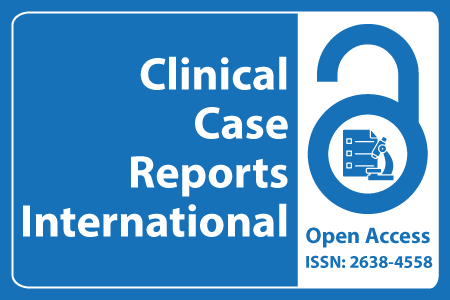
Journal Basic Info
- Impact Factor: 0.285**
- H-Index: 6
- ISSN: 2638-4558
- DOI: 10.25107/2638-4558
Major Scope
- Orthopedics & Rheumatology
- Sports Medicine
- Signs and Symptoms-Clinical Findings
- Nuclear Medicine
- Neurology
- Psychiatry
- Neurological Surgery
- Biochemistry and Biostatistics
Abstract
Citation: Clin Case Rep Int. 2022;6(1):1322.DOI: 10.25107/2638-4558.1322
Comparison of HCV Genotyping Methodologies (Real- Time PCR and Conventional PCR)
Bushra Uzair , Sadia Abid, Asma Saleem and Kanwal Bibi
Department of Bioinformatics and Biotechnology, International Islamic University, Pakistan
*Correspondance to: Bushra Uzair
PDF Full Text Research Article | Open Access
Abstract:
A considerable amount of attention has been paid on hepatitis C virus infection due to its fatal consequences. Genotyping is an essential tool to predict the outcome of better treatment and control of this infection. 50 samples from patients with HCV infection within the ages from 20 to 65 years were collected. HCV Ab ELISA kit was used for the detection of virus in the samples which tested 43 patients HCV RNA positive. Maximum viral load detected in patients was 9.4 × 107 IU/mL and the minimum quantity of viral load was 1.2 × 105 IU/mL. The major mode of transmission of virus which caused hepatitis in patients included unsafe blood transfusion, use of unsterile needles and dental instrument. In our study 37 patients were detected with 3a genotype, 2 with 1a genotype and genotype of 4 patients was untypable. Further analysis of these patients’ genotype by Real- Time PCR revealed that they were also infected by 3a genotype. Overall assessment showed that genotype 3a is the most prevalent genotype affecting 95% patients followed by 1a. Only males were infected by genotype 1a due to travelling to neighbor countries. Comparative analysis on genotyping methodologies suggests that Real-Time PCR has advantage over traditional PCR. Conventional PCR is less effective method because of its poor resolution, less sensitivity and risk of contamination. It is time consuming process and yield results at the end point of reaction. In contrast, Real-Time PCR has enhanced rapidity, reproducibility, sensitivity and the reduced risk of contamination. In addition, it can resolve 95% of HCV genotypes and can provide data at exponential growth phase of the reaction.
Keywords:
Hepatitis C virus; HCV-RNA; Genotyping; Real–Time PCR
Cite the Article:
Uzair B, Abid S, Saleem A, Bibi K. Comparison of HCV Genotyping Methodologies (Real-Time PCR and Conventional PCR). Clin Case Rep Int. 2022; 6: 1322..













